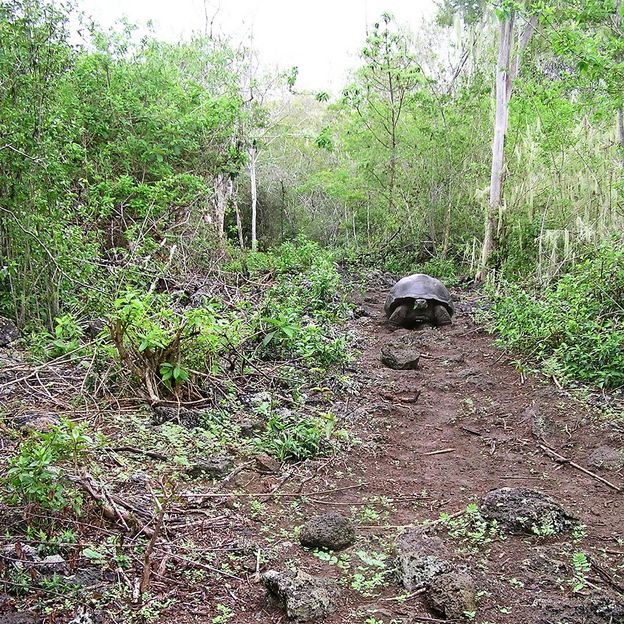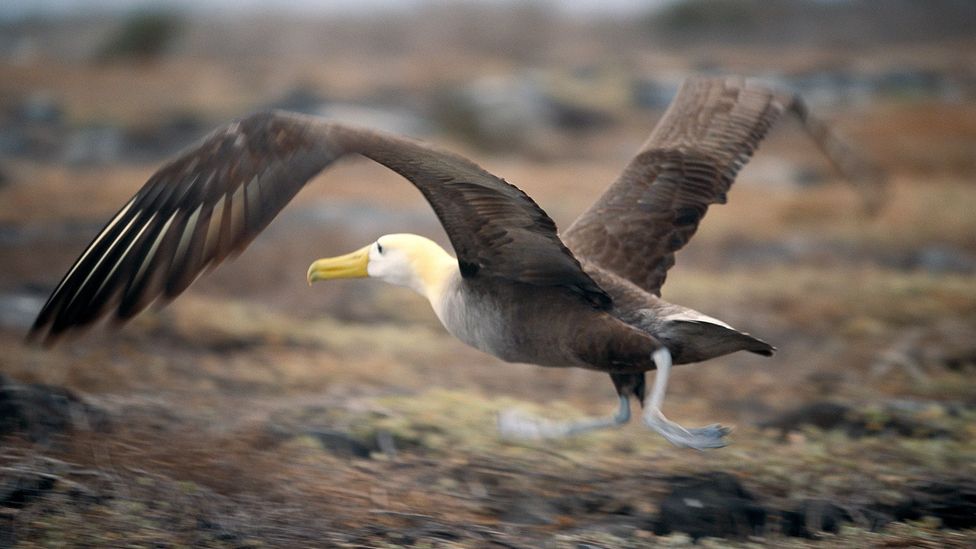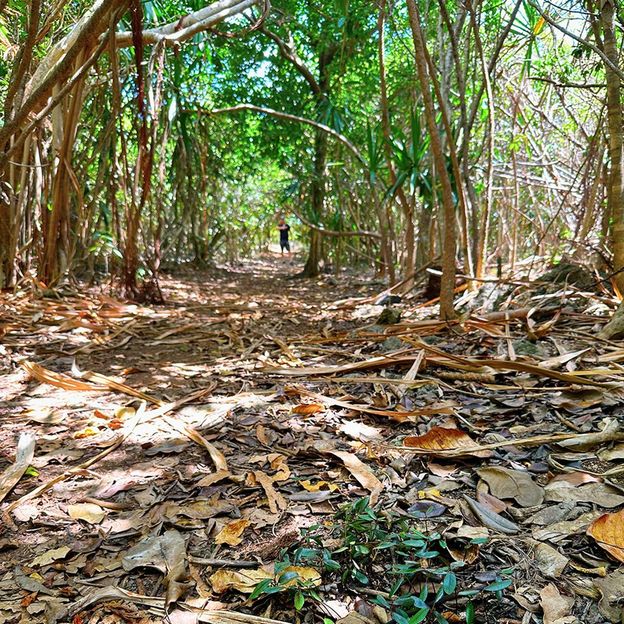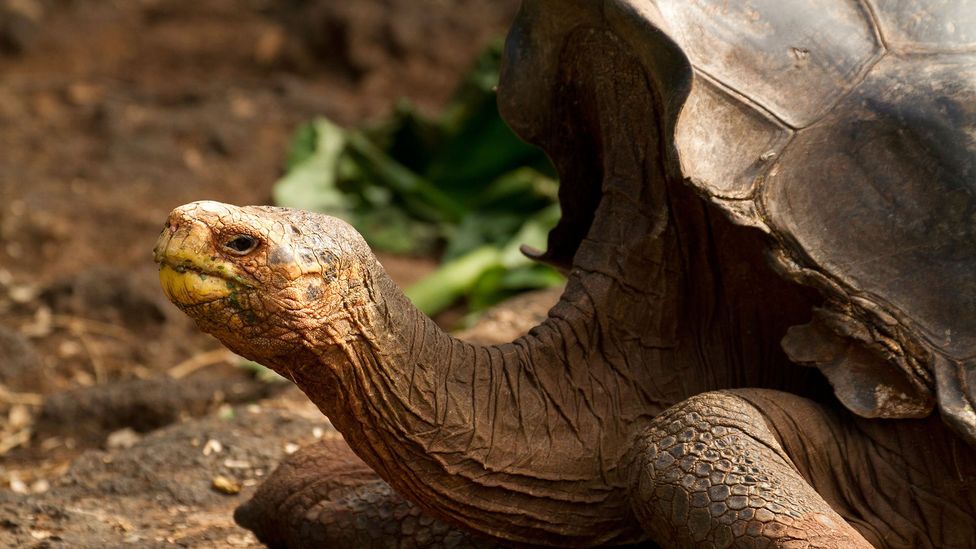Española's burgeoning tortoise population – made up of the children and grandchildren of Diego, one of the archipelago's most beloved tortoise residents – is helping to restore the island's lost ecosystem.
Before the arrival of humans, Española had as many as 8,000 resident tortoises. However, in the 1800s, pirates and whalers nearly stripped Española and neighbouring islands of their tortoises for their meat. These sailors also left behind goats, which went wild, multiplied, and devoured native vegetation.
Sign up to Future Earth
Sign up to the Future Earth newsletter to get essential climate news and hopeful developments in your inbox every Tuesday from Carl Nasman. This email is currently available to non-UK readers. In the UK? Sign up for newsletters here.
By the 1970s much of the pristine habitat was wrecked. Española was down to its last 14 tortoises; 12 females, and two males. These were brought back to the Darwin Research Station's breeding programme on Santa Cruz between 1964 and 1974, and were later joined by Diego who was discovered in the San Diego zoo. Diego since fathered hundreds of tortoises, playing a key role in saving this critically endangered species, before returning to the place of his birth to live out his retirement in 2020.
"Tortoises have an important ecosystem shaping behaviour," says Elizabeth Hunter, a conservation biologist for the US Geological Survey and Virginia Tech. She has studied tortoise ecology in the Galápagos Islands for over a decade. "[When they are gone], much more is lost than just the animals themselves. If there's no large herbivore present, then there's nothing to stop those woody plants [proliferating which] has cascading effects on other species and the habitat itself."

Giant tortoises clear trails as they travel across the island (Credit: Iniciativa Galápagos)
When Charles Darwin visited the Galápagos islands in 1835 he noticed a network of trails up and down the side of a volcano on San Cristóbal, caused by tortoises migrating from the highlands to the lowlands. On Española, tortoises have historically maintained clearings needed for nesting grounds by the critically endangered waved albatross which breeds almost exclusively here.
The albatross have huge wingspans, [up to 2m (6.6ft) across], Hunter says. "To take off, they have to get a running start. They need an open area that's sufficiently wide and long. The tortoises are what allowed those landing strips to be present. And when the tortoises were gone, the vegetation really closed in."
Just living their daily lives, says Hunter, tortoises spur the island's natural cycles. A single tortoise can eat hundreds of kilograms of vegetation every year and thin out the undergrowth in the process. What it doesn't eat, it tramples. A giant tortoise in motion is essentially a bulldozer, knocking everything out of its way, and in the process boosting biodiversity.
Now, driven by a 50-year breeding programme, Espanola's tortoise population – 3,000 and growing – is bringing back the native grasses and cacti. A 2023 study showed that woody plants are slowly declining and open savannas are returning – brought back by tortoise power.

Albatross "landing strips" are maintained by giant tortoises allowing them to take off and land (Credit: Alamy)
And, despite being a land animal, a Galápagos tortoise's love of water is extraordinary. Two dozen or more of them may soak together in one of their muddy ponds, with a duck or two paddling around nearby, only their heads and the tops of their shells visible above the algae.
When a tortoise dips into a pond to cool off, it drags along nutrients from the land into the water. It also defecates in the water, enriching it with fertiliser and changing the oxygen level, creating a nutrient-rich aquatic environment for plants and insects. And it's a two-way street. When a Galápagos tortoise crawls out of its pond it is covered with mud – as much as 1lb (0.5kg) of dirt when dry. Multiply this by thousands of tortoises moving in and out of dozens of ponds every week, and tonnes of soil are displaced in a year.
CARBON COUNT
The emissions from travel it took to report this story were 0kg CO2. The digital emissions from this story are an estimated 1.2g to 3.6g CO2 per page view. Find out more about how we calculated this figure here.
Tortoises are also "prodigious seed dispersers", according to one study. The animals can walk as far as 10km (6.2 miles) in two weeks, dispersing thousands of seeds in their faeces along the way. Seeds can take up to a month to pass through the tortoise's gut so the seeds are carried away from the parent plant. This is thought to improve germination chances for endemic plants, such as the Galápagos tomato.
Tortoises are found in many parts of the world, and function as ecosystem engineers in different ways in different places. In North America, gopher tortoises dig burrows up to 12m (39ft) long which are also used by as many as 350 other species including burrowing owls, the Florida mouse, and eastern indigo snake.
They eat the fruit in the forest, then they need to bask. So, they move between the different habitat types, and help spread the forest – Christine Griffiths
On Indian Ocean islands, too, tortoises are reforestation partners. On the main island of Mauritius, giant tortoises from Aldabra atoll have been brought to the Ebony Forest reserve to do the work of two extinct endemic tortoise species, eating invasive grass and help boost native plants.
"We're missing a grazing function in the forests," says Christine Griffiths, a conservation biologist who manages the reserve. "The tortoises naturally create open areas, and we want them to keep the [non-native] weeds low but let the planted natives grow up." By creating short grass areas, she says, it forces the grass to change its form. It starts to grow laterally, creating short-cropped tortoise turf.
You might also like:
- Last male of his kind: The rhino that became a conservation icon
- Wildebeest and wolves: The secret weapons against climate change
- Why grazing bison could be good for the planet
On two islets off the coast of Mauritius, tortoises are also helping to expand forests. Gravity and wind tend to move seeds to lower elevations, says Griffiths, but tortoises carry seeds uphill. "On Round Island, where they create disturbances, you start to get lots of nice regeneration of more than wind-dispersed seeds, which we never saw before. They really are engineering that environment," she says.
Meanwhile, on the neighbouring Ile aux Aigrettes, giant tortoises feast on fallen ebony fruits which are loaded with seeds. "They eat the fruit in the forest, and then they need to bask. They need sun," says Griffiths. "So, they move between the different habitat types, and help spread the forest. Suddenly, you get these very dense patches of ebony seedlings germinated from the poo. It's quite impressive."

Ebony seedlings sprouting from tortoise droppings on Ile aux Aigrettes (Credit: Kevin Gepford)
As giant tortoises regain a foothold on these fragile islands, landscapes and plant communities are already beginning to reap the rewards. However, success for projects like these is measured in decades, if not centuries. For studies on vegetation changes – like the one on Española – a decade can pass before researchers start to see the changes wrought by tortoises. Galápagos tortoises can take 20 years or more to reach reproductive age, which presents challenges to scaling up similar projects – and it will be a future generation of conservationists who will see how it all plays out.
--
If you liked this story, sign up for The Essential List newsletter – a handpicked selection of features, videos and can't-miss news delivered to your inbox every Friday.
Join one million Future fans by liking us on Facebook, or follow us on Twitter or Instagram.
